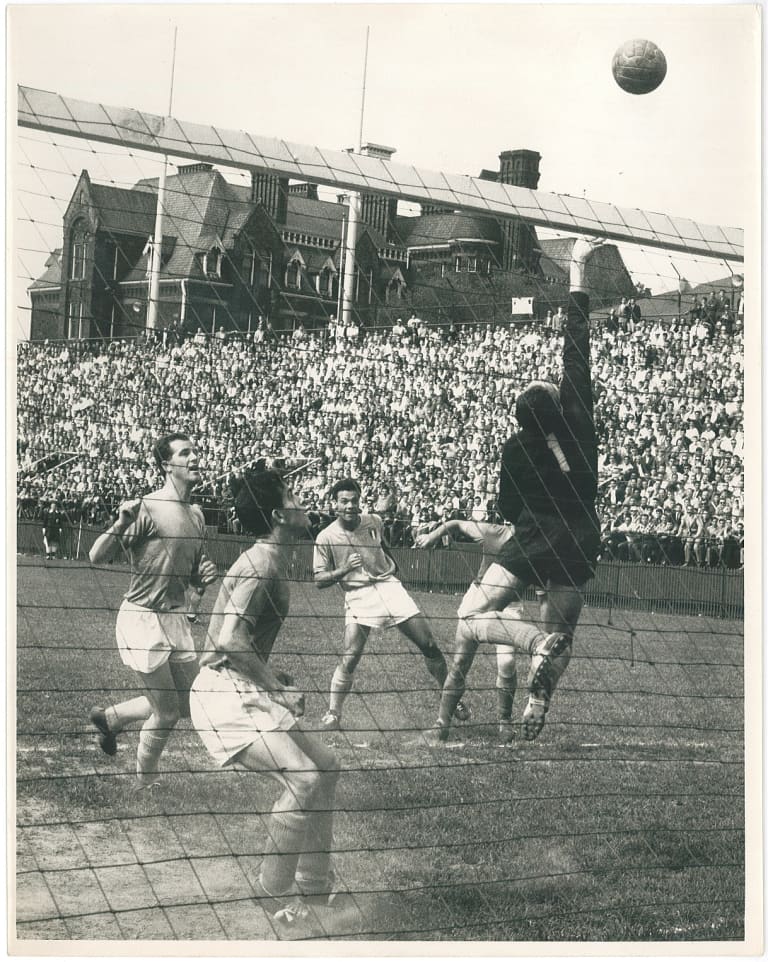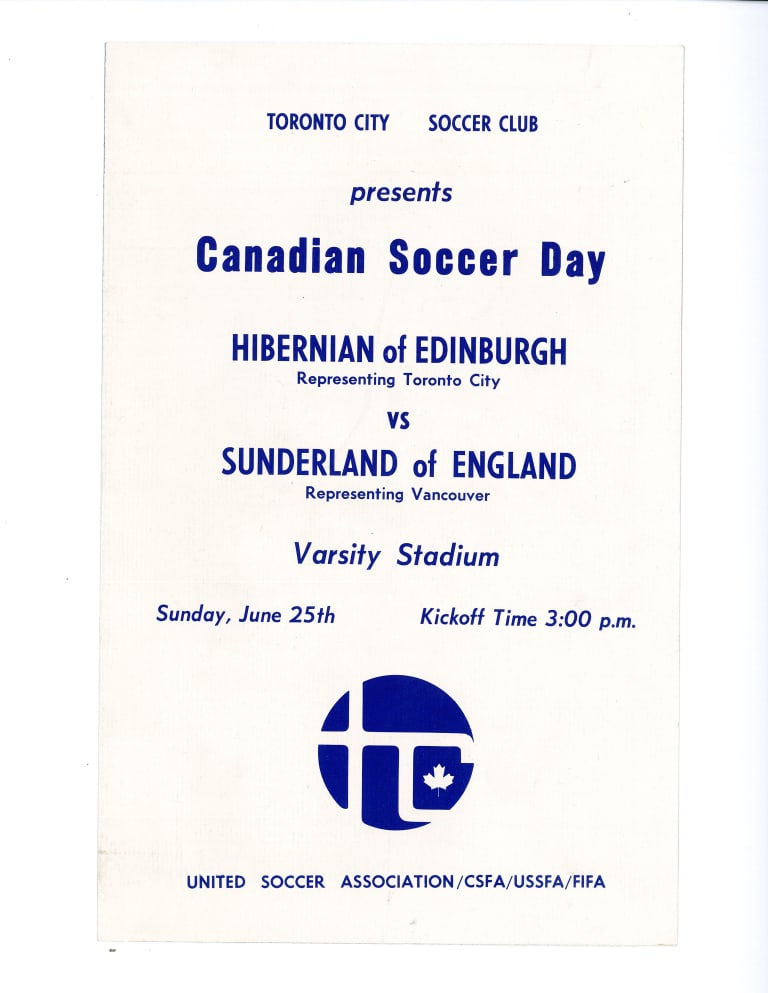The history of Soccer in Toronto and Canada are inextricably linked. As the most populous city in the country, any sport that required a gathering of 22 like-minded souls was always going to prosper where there were more people. The roots of Toronto go even deeper than perhaps many would realize.
The first game of Association Football was played in the City of Toronto on the 21st of October, 1876 between the football teams of Carlton Cricket Club and Toronto Lacrosse Club.
One year later, on the 21st of February, The Dominon Football Association was formed. It was the first such body outside of the British Isles. From these small starts, Toronto had proven that it was set to be a major influence on soccer in Canada.
Fast Forward to 1926 and the founding of the National Soccer League (NSL). This was a semi-pro circuit that Toronto teams would enjoy great success in with Toronto Ulster United being the pick of a very fruitful bunch. Toronto Soccer would fade briefly in the 30's following the Great Depression, but it was the advent of the Second World War that would really set things back.
The Ontario Soccer Association essentially went on hiatus for 10 years, and the NSL wasn't contested between 1941 – 1947. There were signs of life in soccer post-war; Toronto hosted Canada's first ever World Cup Qualifying game, a 5-1 win over the USA in 1957, and Toronto Greenbacks competed in the North American Football League in 1946 and '47. It wasn't, however, until 1961 and the formation of the Eastern Canada Professional Soccer League that the sport come in from the cold once more.
The ECPSL was a four team league with representation from Hamilton, Montreal, and two Toronto teams, the Toronto Italia who were making the leap from the NSL, and Toronto City, a brand new endeavour under the auspices of George Gross and Steve Stavro. The two would take a trip to Great Britain in an attempt to lure some star power to their fledgling club, and they came back with the signatures of Scots Tommy Younger and Jackie Mudie, England and Fulham captain Johnny Haynes, Northern Irish and Tottenham Hostspur captain Danny Blanchflower.
While these names were all stars in their own right, the real coup was the signing of Stanley Matthews. Even though he was already 46 in 1961, Matthews was a legitimate legend of the game, admired the world over and four years away from being knighted whilst still playing, the only soccer player to have achieved this honour. The league got under way in the spring of 1961, with 16,509 people cramming into Varsity Stadium to watch Toronto City take on Toronto Italia.

City would go on to win the league that year, but lose in the semi-finals of the playoffs. The following year the English FA stepped in and banned players from taking these summer trips which curtailed Toronto City's experiments. The league would briefly expand to five teams before disbanding in 1966 following Toronto City's withdrawal for the ill-fated United Soccer Association. In 1966 A group of team owners, including Steve Stavro at Toronto City, successfully lobbied to receive official approval from the DCFA (Dominion of Canada Football Association), the USSF, and FIFA for a league to begin play in 1968.
It would be called the United Soccer Association, or USA. At the same time, a second group of owners which included Joe Peters, the owner of Toronto Italia-Falcons, figured they could go out on their own without official sanctioning and planned to start their National Professional Soccer League, or NPSL, in 1967. USA had FIFA rights, NPSL had a television deal. This spooked the USA owners enough to spur them into action and start their league a season early. Whilst there wasn't time to build teams from scratch, the USA hit upon the rather curious idea of simply bringing European and South American teams in, giving them different uniforms and names, and have them represent their host cities for the duration of the league. Toronto City were represented by Hibernian from Edinburgh, Scotland. Individual owners would market their teams differently, depending on the cities they were based in.
The programme pictured here (right) shows that Toronto City foregrounded the pedigree of their team, as well as the official credentials bestowed upon them by the governing bodies of world soccer. Toronto City's season in the USA wouldn't end in glory, as they finished in 4th in their Division, missing the playoffs.

Toronto's representative in the NPSL was the altogether more outspoken Joe Peters and his Toronto Falcons. Peters had purchased Toronto Italia of the ECPSL in previous years and in the NPSL he was finally able to change the identity of his team. He brought in a number of foreign stars, recruiting heavily from Argentina and Spain, tapping in to the expertise of Hector Marinaro Sr., his coach and Genereal Manager.
Similar to the Toronto City of 1961, the Falcons had a trump card in the form of an ageing European superstar, the player voted by the fans as the best to have ever played for Barcelona, Ladislav Kubala. He, along with his brother-in-law Yanko Daucik, took the league by storm, with Daucik finishing as the leagues top scorer. In spite of the talent on offer, the Falcons would finish 4th in the their division and miss the playoffs.
The following year saw a merger between the USA and the NPSL to form a league that would sustain soccer in North America for over a decade to come, the North American Soccer League. Toronto City would voluntarily sell their team back to the NASL, and Toronto Falcons participated as Hogtown's representative in the 1968 season. Kubala had retired from playing and, despite his skilled mangerial acumen, the Falcons finished third in the division, missed the playoffs, and folded at the close of the season. After 7 seasons across four leagues professional soccer had once again disappeared from Toronto, but it wouldn't be a long wait for the return of a Toronto team to the NASL, as the Metros would arrive in 1971.

